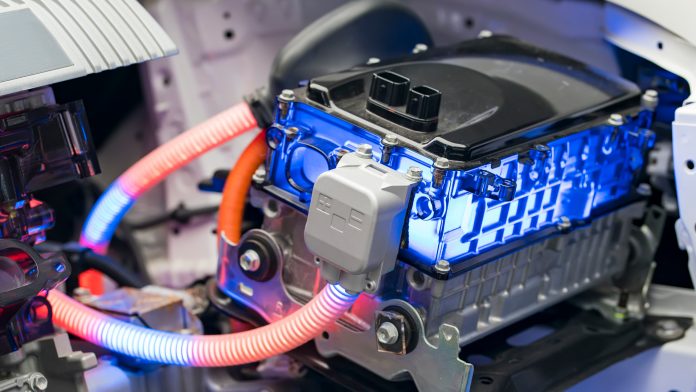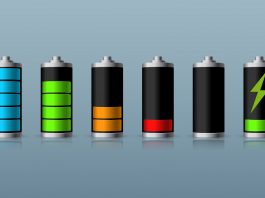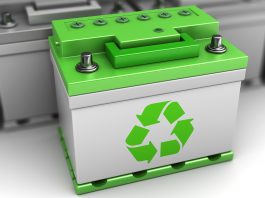The Advanced Rechargeable & Lithium Batteries Association (RECHARGE) outline some of the barriers, and their solutions, to achieving the vision of a prosperous and sustainable economy driven by strategic value chains such as the battery industry.
Speaking during the launch of the European Raw Materials Alliance earlier this autumn, European Commission Vice-President Maroš Šefčovič announced that investment in the European battery ecosystem reached €60bn, three times more than in China. And, indeed, never ever has the European continent seen a faster development of the domestic battery value chain than in the past 24 months. Since the launch of the European Battery Alliance (EBA) at the end of 2017, Europe has developed from a conventional and niche battery cell manufacturing hub to a serious candidate for taking global leadership in advanced rechargeable battery technology. The Commission has made Europe’s battery objective very clear: become the second largest manufacturer of lithium-ion battery cells – the dominant battery chemistry in electric mobility, electronics and battery energy storage systems – and overtake the US and the rest of Asia1 by 2024, at the latest.
Advanced rechargeable batteries, such as lithium-based or next-generation nickel, zinc, sodium, or solid-state battery chemistries, are a key enabler for the transition towards low-emission mobility and decarbonised energy generation. Without them, the target of a climate-neutral economy by 2050 and the 2°C Paris Agreement goal cannot conceivably be reached.
It is, indeed, an increasing awareness of global warming and rising populations that have driven the development of battery storage/power in Europe to date. For years, growing cities and soaring CO2 emissions have pushed for alternative mobility and green electricity solutions.
Batteries’ applications in the automotive, industrial vehicles, and energy sectors are key tools for the aspired green transition. In the transport sector, the hybridisation and electrification of vehicles reduce CO2 emissions, while the use of batteries in industrial vehicles supports both decarbonisation and noise reduction. In the energy sector, batteries are necessary to store renewable energy and contribute to the stability of the electrical grid. Moreover, batteries power everyday applications such as smartphones, tablets, power tools, and robots, and have become a significant job engine for millions of people around the world.
Large-scale electrification with batteries
Once bound to consumer equipment, toys, and starting-lighting-ignition (SLI), batteries have now made their way into smart electronics, robots, electric mobility, and renewables-based energy generation. In particular, the uptake of batteries in electric vehicles (EVs) – be them cars, buses, trucks, or bikes – has fuelled the tremendous market growth of batteries in recent years.
In 2012, about a dozen EV car models were marketed in Europe. Eight years later, nearly a hundred different models from all relevant car manufacturers are being sold to an increasing customer base, and it is expected that some 250 new models will be added to the European car fleet by 2025 alone. A recent market study by Avicenne Energy predicts that carmakers will invest about €300bn in electric vehicles by 2030. Over 250 million battery-powered cars are expected to be driving on Europe’s roads by 2050, according to the European Commission.
Cost reduction
Another driver for the rising demand for batteries has been cost reduction. The cost curve for lithium-based battery cells has developed from US$1,000/kWh in 2010 down to US$200/kWh in 2016. Today, four years later, lithium-ion cells are in the range of about US$100/kWh. Falling costs and falling prices have affected both the EV as well as electronics and battery energy storage markets. The latter particularly benefits from important spill-over effects.
Most relevant to the development of the European battery market has been the new political mindset developed under the European Battery Alliance, triggering the Commission’s Strategic Action Plan on Batteries and a major remodelling of the European vision of a prosperous and sustainable economy driven by strategic value chains such as the battery industry. With the goal of establishing a competitive battery ecosystem based on innovative, sustainable, and competitive batteries in Europe, the Commission set the course for:
- Supporting European battery cell manufacturing at scale and a full competitive value chain in Europe;
- Securing access to raw materials from primary EU and non-EU sources as well as from secondary materials;
- Strengthening industrial leadership through stepped-up EU research and innovation support;
- Developing and strengthening a highly skilled workforce in all parts of the battery value chain;
- Supporting the sustainability of the EU battery cell manufacturing industry with the lowest environmental footprint possible; and
- Ensuring consistency with the broader enabling and regulatory framework.2
The European legislative environment
Against the background of the new battery strategy, the European Commission is going to present its revised battery legislation by the end of 2020. As an industry association representing the entire battery value chain in Europe, at RECHARGE we believe that policymakers now have the unique opportunity to deliver at product level on the EU’s 2050 climate-neutrality and global industrial leadership objectives. The success of the European legislative framework regulating batteries and their components, and, respectively, the long-term success of the European battery strategy, will depend on coherent, meaningful and effective measures that can better support the increasing role of batteries in a decarbonised Europe, and will help establish a level playing field with strong, existing markets outside of the EU on a fair and sustainable basis.
Industry and innovation
A thriving industry in Europe based on cutting-edge innovations will continue to rely on a supportive, lean framework that will provide for investment certainty today as well as in the future: London-based Benchmark Mineral Intelligence forecasts that European cell manufacturing can soon reach an annual production capacity of 446GWh. Today, about half a dozen major lithium battery cell factories are in operation in Europe, accounting for approximately 5% of the global cell and battery manufacturing capacity. Following the Commission strategy for a prosperous battery ecosystem in Europe, about a dozen additional giga-factories have been announced for the coming years and other value chain actors are ramping up their capacity to meet future demand, too.
Especially the battery components and raw materials sector are preparing to invest in expanding their existing capacities and undertaking new projects. The long-term supply of sustainably and responsibly sourced materials is, indeed, one of the major challenges for European industries. In their ‘Critical Raw Materials’ report, the Commission’s Joint Research Center (JRC) have outlined that all strategic value chains, from renewable energy, electric mobility, digitisation, and ITC, to safety, defence, and automatisation potentially face supply risks for a number of different raw materials. The European battery industry has long recognised this issue and has thus begun to research areas such as advanced materials design, effective waste treatment, and application optimisation.
Research and innovation have a vital role to play when it comes to further reducing cost, too. The future development of the batteries market, above all for electric mobility, requires more affordable products. Past cost reduction came primarily from optimisation efforts in manufacturing, economies of scale, general advancements in materials efficiency, and the positive market development in electric mobility and other battery-powered fields of application.
The ‘Batteries Partnership’
To get below the current US$100/kWh mark, further developments in material and battery design will be needed, as well as cutting-edge innovations in battery chemistry, above all cathode material and design. Through initiatives within the framework of Horizon2020/Horizon Europe and the EU’s Technology and Innovation Platform on Batteries, the industry is proactively working towards a roadmap for innovation leadership. To that end, the European battery industry is currently working with the European Commission to establish the so-called ‘Batteries European Partnership’, a private-public research and innovation platform with the objective of establishing the best in the world innovation ecosystem for a competitive, sustainable and circular battery value chain in Europe by 2030.
The newly developed organisation is mandated “to put Europe on a firm path towards leadership in this key industry, supporting jobs and growth and enabling the decarbonisation of the European energy and mobility system.” While Japan and South Korea still spearhead industrial-scale innovation activities in battery chemistry, Europe, and especially Germany, continue to gain ground, according to a recently-published innovation report by the International Energy Agency (IEA). This report states that in 2018 alone, German battery companies made up for more than 180 patent families in battery technology development, compared to 54 in 2008. According to the same report, patenting activity has significantly increased in the battery sector as a whole, with lithium-ion technology leading the innovation spectrum.
RECHARGE and its members are at the core of both the ready-for-action Batteries Partnership as well as the visionary research agenda of Battery 2030+. The EU-funded Battery 2030+ project was created to support long-term research in ultra-high performance, smart batteries – or, in other words, the battery of the future.
For the European battery value chain to stay on course for the much-aspired sustainability and technological leadership objective, all actors must step up, once again, their commitment and efforts. Industry actors must continue their hard work to market batteries that optimise power and energy density, last even longer, and enable the development of new products for a decarbonised and circular society. Researchers and universities must continue looking into affordable, scalable innovations that are designed to efficiently use our resources while meeting growing user expectations. Policy makers must now translate the European battery vision into meaningful legislative measures that will truly close the gaps in existing legislation and can level the playing field with non-European actors.
All actors working together will determine the success of establishing a new type of industrial leadership that is based on batteries no longer competing just on cost but on quality, innovation, and sustainability.
About RECHARGE
RECHARGE is the leading voice for the advanced rechargeable and lithium battery value chain in Europe. It is our mission to promote advanced rechargeable batteries as a key technology that will contribute to a more empowered, sustainable, and circular economy by enabling decarbonised electricity and mobility.
RECHARGE’s unique membership covers all aspects of the advanced rechargeable battery value chain in Europe: from the suppliers of primary and secondary raw materials, to battery and original equipment manufacturers (OEMs), to logistic partners and battery recyclers. For more information, visit www.rechargebatteries.org
Notes
- Excluding China
- Source: eba250.com/strategic-action-plan-for-batteries
The Advanced Rechargeable & Lithium Batteries Association
(RECHARGE)
+32 2 777 05 60
recharge@rechargebatteries.org
Tweet @RechargeEurope
https://rechargebatteries.org/
Please note, this article will also appear in the fourth edition of our new quarterly publication.









